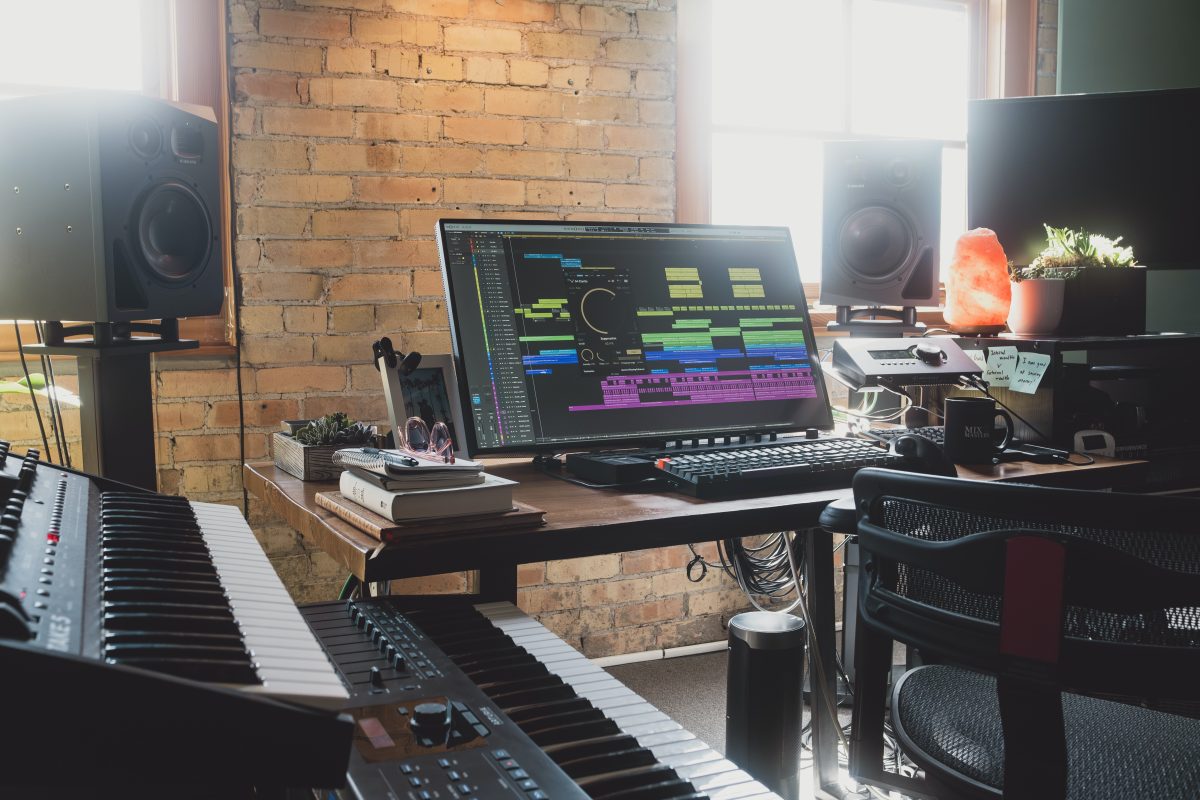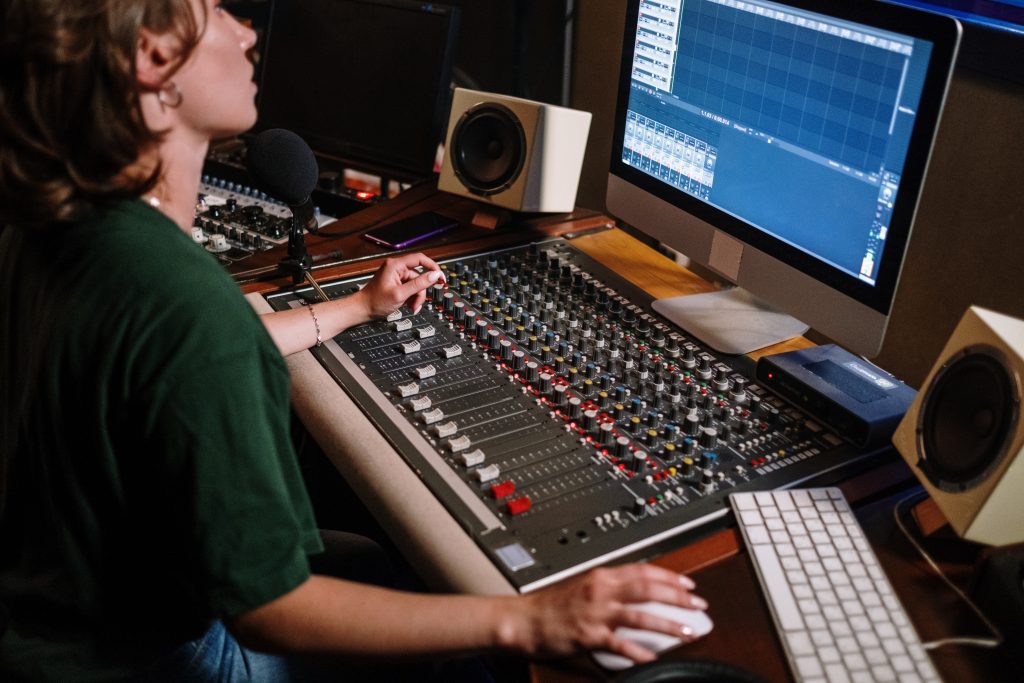Struggling to organize your tracks? Today, we’ll unravel the secret to audio production and organization—grouping. Grouping will be your new best friend in organizing, streamlining, and mastering your audio projects.
What is grouping? Grouping is the technique of routing multiple tracks into a single channel, allowing you to process them collectively and achieve better control and organization in your mixes.
What is grouping in mixing music?
In the context of music mixing, grouping refers to the process of organizing and manipulating multiple audio tracks as a single unit or entity. It involves assigning related tracks to a group or subgroup so that they can be controlled, processed, or adjusted together.

Grouping is commonly used in mixing to apply certain changes or effects to a collection of tracks rather than treating each track individually. It allows the mixer to make adjustments to the overall balance, dynamics, or tonal characteristics of multiple tracks simultaneously, saving time and providing a cohesive sound.
AKAI Professional MPK Mini MK3

AKAI Professional MPK Mini MK3
How is grouping commonly used in mixing?
Here are a few common applications of grouping in music mixing:
1. Level and fader control
By grouping tracks, you can adjust their relative volume levels using a single fader or control. This simplifies the mixing process, allowing you to raise or lower the overall level of a group of tracks while maintaining their relative balance.
2. Processing and effects
Grouping tracks together allows you to apply the same processing or effects to them collectively. For example, you can add reverb or delay to a group of background vocals or compress multiple drum tracks as a whole. This helps in creating a cohesive sound and controlling the dynamics of the group.
The specific techniques and methods for grouping tracks may vary depending on the digital audio workstation (DAW) or mixing console being used.
3. Automation
Grouping tracks enable you to automate changes across the entire group. Instead of individually automating each track, you can automate the group’s fader movements, panning, or any other parameter, saving time and ensuring consistent changes across related tracks.
4. Organization and navigation
Grouping tracks visually and spatially in your mixing software helps in organizing complex sessions. It makes it easier to locate and edit specific elements within your mix, especially when dealing with large track counts.
The specific techniques and methods for grouping tracks may vary depending on the digital audio workstation (DAW) or mixing console being used. However, most modern DAWs provide features and tools for creating, managing, and manipulating groups of tracks.

How to do grouping when mixing music
Grouping when mixing music is an important technique that allows you to organize and process multiple tracks together, enhancing control and improving workflow during the mixing process. Here are some steps and tips to help you with grouping when mixing music:
1. Start with a solid foundation
Before you begin grouping, it’s essential to have well-recorded tracks with good performance and recording quality. High-quality recordings provide a better starting point for the mixing process.
2. Set up subgroups
Creating subgroups is a common practice in mixing. It involves grouping similar tracks to process them collectively. For example, you can create subgroups for drums, vocals, guitars, and so on. This helps in controlling and applying processing to specific elements of your mix more efficiently.
3. Group by frequency content
Another approach is to group tracks based on their frequency content. For instance, you can create separate groups for high-frequency elements like hi-hats and cymbals or low-frequency elements like kick drums and bass. This allows you to adjust the tonal balance of each group individually.
4. Group by dynamics
Grouping tracks by dynamics involves grouping sounds that have a similar range of dynamics. For example, you can create a group for percussive and transient-heavy elements and another group for sustained and pad-like sounds. This helps maintain control over the dynamics of different elements in your mix.
5. Utilize parallel processing
Parallel processing can add depth and character to your mix. To set it up easily, create a group channel specifically for parallel processing. Then, route the desired tracks to this group and apply effects or processing to it separately. This allows you to blend the processed and unprocessed signals to achieve the desired sound.
6. Create a render group
To simplify the process of bouncing multiple tracks to audio, set up a render group bus. Route the tracks you want to bounce to the render group, and then route the output of the render group to a spare audio channel. This way, you can easily record the combined signal onto the audio track.
7. Consider a premaster group
Pre-routing all track signals to a final “premaster” group channel allows you to apply master processing to the entire mix while keeping the master bus free. This enables you to reference tracks within your project directly to the master out, bypassing the master processing for comparison and evaluation.
By implementing these grouping techniques, you can streamline your mixing workflow, have more control over individual elements, and achieve a more cohesive and professional-sounding mix.

Advantages and disadvantages of audio grouping
When it comes to mixing music, there are several advantages and disadvantages to consider. Let’s explore both sides of the coin, so you can make informed decisions as you embark on your mixing journey.
Advantages of grouping
- Greater creative control: Mixing allows you to shape the sound of your music to your liking, giving you the ability to enhance certain elements, balance the instruments, and create a cohesive and polished final product.
- Improved audio quality: By adjusting the levels, panning, and equalization, you can enhance the overall audio quality of your tracks, making them sound clearer, more balanced, and more professional.
- Enhances musicality: Skillful mixing can bring out the best in each instrument, ensuring that they blend harmoniously and contribute to the overall musicality of the composition. It allows you to highlight the strengths of each element and create a more immersive listening experience.
- Fixing imperfections: Mixing provides an opportunity to correct any imperfections or issues in the original recordings, such as background noise, varying volume levels, or timing discrepancies. This can greatly improve the overall coherence and polish of the final mix.
- Emotional impact: With effective mixing techniques, you can emphasize the emotional aspects of your music. By carefully manipulating the dynamics, reverb, and other effects, you can evoke specific feelings and create a more engaging and impactful listening experience.
Disadvantages of grouping
- Steep learning curve: Achieving professional-level mixing skills can take time and effort. It requires a deep understanding of audio engineering concepts, technical proficiency with various tools and software, and a keen ear for detail. This learning curve can be challenging and may require dedication and patience.
- Subjective nature: Mixing is inherently subjective, as different individuals may have varying preferences and interpretations of what sounds good. It can be difficult to strike the right balance and meet everyone’s expectations, especially when working on collaborative projects or seeking broader audience appeal.
- Time-consuming process: Mixing can be a time-consuming endeavor, particularly for complex projects with multiple tracks. Achieving the desired results often involves numerous iterations and careful adjustments, which can extend the overall production timeline.
- Technical limitations: Depending on the equipment and software at your disposal, you may encounter certain technical limitations during the mixing process. This can range from hardware constraints to software compatibility issues, potentially hindering your ability to achieve specific sonic goals.
- Fatigue and objectivity: Spending long hours on mixing can lead to ear fatigue, making it challenging to maintain objectivity in assessing the quality of the mix. It’s important to take breaks and allow yourself time to rest and reset your ears to ensure accurate judgment.
Frequently asked questions (FAQ)
Why is grouping important in music mixing?
Grouping is essential in music mixing because it allows for more efficient control over various elements in a mix. By grouping similar tracks, you can apply processing and adjustments collectively, such as adding effects or adjusting levels, saving time, and ensuring a more cohesive and balanced sound. It also helps maintain the relationship and balance between different elements, ensuring they work together harmoniously.
How do you create groups in a mix?
Creating groups in a mix typically involves selecting related tracks or elements and routing them to a common bus or channel. Most digital audio workstations (DAWs) provide functionality for creating groups, allowing you to route multiple tracks to a single group channel. This enables you to apply processing, automation, and adjustments collectively to the entire group, simplifying the mixing process.
What are some common grouping techniques in music mixing?
There are various grouping techniques used in music mixing, depending on the specific requirements of the mix. Some common examples include grouping drum tracks to manage levels and processing collectively, grouping background vocals to apply common effects or adjust their overall presence, or grouping different sections of an orchestra to control their balance and dynamics independently. The choice of grouping techniques depends on the context and desired outcome of the mix.
How does grouping in audio benefit my projects?
Grouping in audio offers numerous benefits, such as improved workflow and organization, easier editing, and better creative control. By grouping similar or related tracks, you can apply changes to multiple tracks at once, saving time and maintaining consistency.
What are some common challenges when using grouping in audio?
Common challenges include over-grouping, which can lead to confusion and a cluttered workspace, and accidentally applying changes to the wrong group. To overcome these challenges, it’s crucial to plan your groupings carefully and follow best practices for track organization.
Are there specific tools or software for implementing grouping in audio?
Many Digital Audio Workstations (DAWs) have built-in grouping capabilities, such as Pro Tools, Logic Pro, and Ableton Live. Additionally, third-party plugins and tools are designed to assist with grouping, providing users with more options to customize their audio projects.
Conclusion
Thank you for joining me on this journey into the world of grouping in music production. I hope you’ve gained valuable insights into how to enhance your sonic control, streamline your workflow, and organize your mixes effectively. Remember, grouping is not just a technical concept—it’s a powerful tool that empowers you to take your music production to the next level.
Did I cover everything you wanted to know? Let me know in the comments section below (I read and reply to every comment). If you found this article helpful, share it with a friend, and check out my full blog for more tips and tricks on music production. Thanks for reading, and keep grooving to the rhythm of your creativity!
Key takeaways
This article covered grouping in mixing music. Here are some key takeaways:
- Grouping in music mixing involves organizing and manipulating multiple audio tracks as a single unit, allowing for efficient control and processing.
- Common applications of grouping include level and fader control, processing and effects, automation, and organization/navigation within the mix.
- Grouping can be done by creating subgroups based on instrument types, frequency content, or dynamics to achieve better control and tonal balance.
- Utilizing parallel processing and render groups can enhance creativity and simplify the mixing process.
- Grouping provides advantages such as greater creative control, improved audio quality, enhanced musicality, fixing imperfections, and evoking emotional impact.















